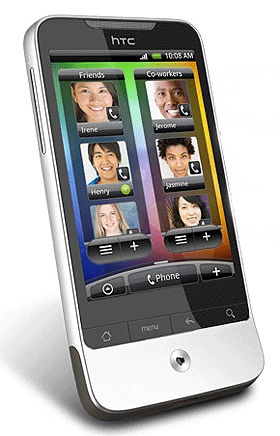It was a distressing day for a fellow reporter at The Engineer a few weeks ago when he discovered his brand new mobile phone – the sleek HTC Legend – had mysteriously disappeared from his pocket.
After hours passed and he checked all the possible places it could be, Stephen Harris realised that his phone had become just another statistic. It had become one of the 10,000 mobile phones the Metropolitan Police estimates are stolen per month.

Thankfully his insurance company was willing to cover the cost of buying a new one, which was estimated to be over £300, but there is nothing that can console the feeling of violation one gets when their property is taken.
With each high-tech, must-have portable electronic device that comes out, we are becoming more and more interesting targets for criminals. A study conducted by Esure last year found that London commuters can carry more than £3,000 worth of technology on their person at a time.
The figure seems steep to me and I’d wonder how anyone could bear that much hardware at one time but there’s no doubt many of us walk around with some fairly valuable stuff. Just a £429 iPad and £419 iPhone would be enough to satisfy any thief.
Last year the Home Office began tackling the issue of mobile phone theft prevention through an unusual angle. With the Design Council, it established a project called Design Out Crime, which aimed to show how designers can stop crime from ever happening.
A panel including Vodafone’s chief cryptographer and a director of design at Nokia chose three crime deterring solutions in the project’s Mobile Phone Security Challenge.
The first called Tie, from product designer and consultancy Rodd, pairs a mobile phone with one or more SIM cards. The sensitive data on the phone is encrypted with a 128 bit key that allows a user to send an SMS to lock it when stolen. The SMS will effectively make the paired phone and SMS useless.
When the thief attempts to replace the SIM with a new one, the phone will shut down and become unusable.
Design Out Crime: Tie from Design Council on Vimeo.
The next solution called TouchSafe hopes to prevent criminals from taking advantage of NFC (Near Field Communication) technology, which allows users to make payments for purchases with their mobile phone.
Consumer technology specialist Proxama and Minima, a Suffolk-based design and product development consultancy, have developed an RFID card that users must carry separately from their NFC phone. Before making a purchase, the user must swipe the phone past the RFID card to launch and validate its m-commerce payment application.
Design Out Crime: TouchSafe from Design Council on Vimeo.
The final winning solution is from product development company Data Transfer & Communications Limited and PDD, a provider of integrated design and innovation skills. Their i-migo concept could prevent the all-too-common occurrence where a mobile phone is slyly stolen from a restaurant or pub table right under the owner’s nose. The i-migo device, which resembles a USB stick, uses Bluetooth to regularly back up data from a mobile phone.
Similar to the TouchSafe card, the device must be carried separately from a user’s mobile phone. If the i-migo device is separated from its paired phone, it will immediately ring an alarm alerting the owner the phone has been stolen. The phone will also automatically lock to protect sensitive data.
Design Out Crime: i-migo from Design Council on Vimeo.
I asked Stephen if his phone may have been saved by something like the i-migo, and he said he wasn’t sure. As he tried to remember the last place he had his phone, he couldn’t help but think it may have departed from his pocket during a clumsy moment in a local clothing store.
‘The technology they really need to invent is one to stop my phone from falling out in a shop changing room,’ he said.





Glasgow trial explores AR cues for autonomous road safety
They've ploughed into a few vulnerable road users in the past. Making that less likely will make it spectacularly easy to stop the traffic for...